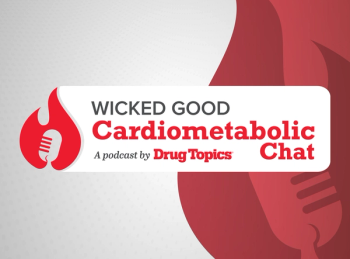
Majority of Americans Understand Risks of Increased Acetaminophen Usage
Acetaminophen exposure can increase the risk of perforation, ulceration, bleeding, heart failure, hypertension, and chronic kidney disease.
In a 2025 survey, 75% of older adults stated they experience chronic pain, showing the need for education on chronic pain and acetaminophen use, according to the Health in Hand Foundation. Further, approximately 86% of Americans stated that taking more than the maximum daily dose of acetaminophen can lead to liver damage, which decreased slightly from 2022 at 89% and remains higher than 81% in 2010.1,2
“Acetaminophen is in hundreds of prescription and OTC medicines,” Brigid Groves, vice president of professional affairs for the American Pharmacists Association, said in a news release.1 “These medicines are safe and effective when used as directed, but it is critical that patients read the label and take only 1 medicine containing acetaminophen at a time. As a member of the AAC [Acetaminophen Awareness Coalition], APhA welcomes National Older Americans Month as an opportunity to further highlight the importance of safe medicine use and remains committed to our continued public education efforts surrounding acetaminophen safety.”
Acetaminophen has been associated with several serious complications and requires careful consideration for long-term use in older adults, according to findings published in Arthritis Care and Research. Investigators found that the drug was associated with an increased risk of perforation, ulceration, bleeding, uncomplicated peptic ulcers, lower gastrointestinal bleeding, heart failure, hypertension, and chronic kidney disease.3
The survey is conducted every 3 years, with the first being conducted in 2010. Investigators aim to understand the consumer understanding of the modification safety and awareness of the risk—particularly for acetaminophen since it is a common drug in both prescriptions and OTC medications. The survey was conducted from March 14 to March 20, 2025, including data from 1332 US patients who had taken acetaminophen in the past 6 months. This included both prescription and OTC acetaminophen. There were 263 adults who were 65 and older.2
They found that 91% of respondents in 2025 agreed it is important to follow the dosing directions for their medication, and 97% said it is important to check the label to find the maximum daily dose, compared with 78% and 95%, respectively, in 2010. However, 81% agreed that multiple medicines with acetaminophen should not be taken at the same time, which is a slight decrease from 84% in 2010.2
“It is encouraging to see the majority of consumers understanding how to safely choose and use products containing acetaminophen, and we are committed to ongoing educational initiatives that increase risk awareness and safe use behaviors,” Mary Leonard, executive director of the Consumer Healthcare Product Association’s Health In Hand Foundation, said in a news release. “The Know Your Dose campaign—which was established by the Acetaminophen Awareness Coalition (AAC) in 2011—has reached millions of consumers and health care providers with free educational resources on how to safely use medicines that contain acetaminophen. During National Older Americans Month, we recognize that nearly three-quarters of older adults experience chronic pain and remain dedicated to promoting educational resources on using acetaminophen safely and responsibly.”
READ MORE:
Ready to impress your pharmacy colleagues with the latest drug information, industry trends, and patient care tips? Sign up today for our
REFERENCES
1. Awareness of Safe Acetaminophen Use Is High—But More Education Is Needed, Especially for Older Adults Experiencing Chronic Pain. News release. Consumer Healthcare Products Association. May 22, 2025. Accessed May 23, 2025. https://www.chpa.org/news/2025/05/awareness-safe-acetaminophen-use-high-more-education-needed-especially-older-adults
2. Health in Hand. Americans Are Smarter About Safe Acetaminophen Use, New Research Shows. May 22, 2025. Accessed May 23, 2025. https://www.knowyourdose.org/wp-content/uploads/2015/06/KYD-2025-Research-Infographic.pdf
3. Kaur J, Nakafero G, Abhishek A, Mallen C, Doherty M, Zhang W. Incidence of Side Effects Associated With Acetaminophen in People Aged 65 Years or More: A Prospective Cohort Study Using Data From the Clinical Practice Research Datalink. Arthritis Care Res (Hoboken). 2025;77(5):666-675. doi:10.1002/acr.25471
Newsletter
Pharmacy practice is always changing. Stay ahead of the curve with the Drug Topics newsletter and get the latest drug information, industry trends, and patient care tips.






































































































































